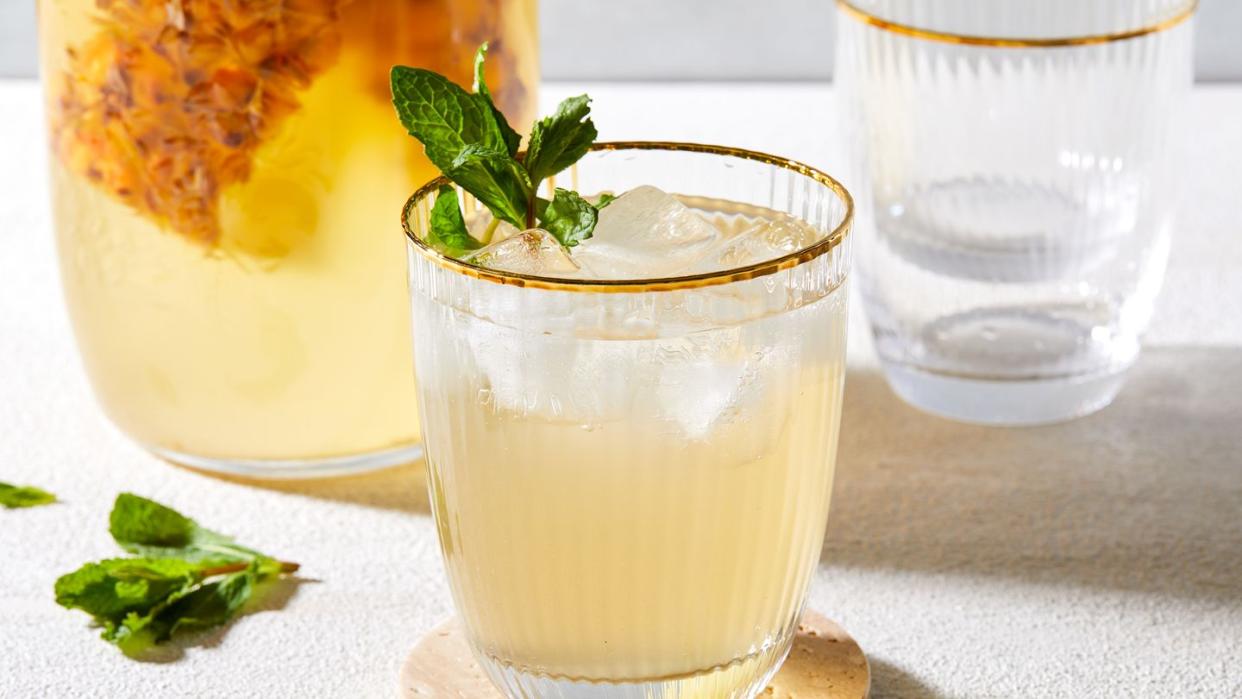Is Tepache The New Kombucha?

"Hearst Magazines and Yahoo may earn commission or revenue on some items through these links."
There's a new beverage hitting the drink aisle—but it's far from a new invention. Tepache has a long history in Mexico, dating back centuries. At its base, pineapple rinds are fermented with an unrefined cane sugar called piloncillo, and there are plenty of regional variations that use different spices. While you can find it sold all over Mexico by street vendors and even mixed with beer, it's starting to appear in the U.S. more and more, on cocktail menus and in stores, usually right next to kombucha.
"I grew up making Tepache with my grandmother," said Rafael Martin del Campo, cofounder of De La Calle tepache. "She taught me how to make it, and sharing this passion with everybody makes me feel good about my family, my ancestors, and my culture—the Mexican culture."
He teamed up with entrepreneur Alex Matthews to launch De La Calle in 2020. "There wasn't a tepache on shelves pretty much anywhere in the U.S. until we launched De La Calle," said Matthews. "I thought we could be the beginning of a new category of beverage that embraced the move towards healthier options in the U.S., that captured more culturally diverse ingredients."

Earlier this year, Tepache Sazón, an alcoholic tepache made in San Pacho, Nayarit, Mexico, landed in the U.S. It's produced with piña miel pineapples, piloncillo, and canela (ceylon cinnamon).
One might compare tepache to kombucha, another fermented beverage that originated outside the U.S., most likely in China. Sandor Katz,"fermentation revivalist" and author of The Art of Fermentation, classifies both drinks as lightly fermented beverages.
"When I first started making kombucha, there was no such thing as commercial kombucha. Commercial kombucha pretty much started around the new millennium," said Katz. This was also when he saw a growing interest in fermented food and beverages. When kombucha first got its start in the U.S., he says it was more grassroots; people would meet up to share a mother, or scoby, which is the culture of bacteria and yeast used to turn tea into kombucha.
“And at some point, somebody had the idea like, ‘Oh, I’m gonna start doing this commercially,' and it’s grown into a billion-dollar industry. And I don’t see any reason why that couldn’t happen with tepache.”
With a shift toward low-sugar, healthier alternatives, Matthews thinks De La Calle has the potential to be as popular as the leading Mexican sodas. And if tepache is anything like the booming tequila and mezcal markets, the drink is just getting started. Kaj Hakkinen, chief innovation officer and co-founder of Back Bar Project, which imports Tepache Sazón, links much of the growing popularity of Mexican spirits to increased U.S. tourism in Mexico.
"Tepache represents a different segment of popular Mexican gastronomic heritage that includes roughly 200 different varieties of regional fermented (rather than distilled) beverages that are made from pineapples and other fruits, along with a wider variety of natural ingredients like agave sap, cacao, corn, spices, and nuts," he said.
"However, the biggest challenge with growing tepache in the U.S. will be educating our customers about this incredible gift that Mexico gave to the world."
You Might Also Like

